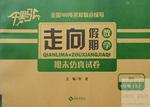题目内容
Most people around the world are right-handed. This also seems to be true in history. In 1799, scientists studied works of art made at different times from 1,500 B.C. to the 1950s. Most of the people shown in these works are right-handed, so the scientists guessed that right-handedness has always been common through history. Today, only about 10% to 15% of the world’s population is left-handed.
Why are there more right-handed people than left-handed ones? Scientists now know that a person’s two hands each have their own jobs. For most people, the hand is used to find things or hold things. The right hand is used to work with things. This is because of the different work of the two sides of the brain. The right side of the brain, which makes a person’s hands and eyes work together, controls the left hand. The left-side of the brain, which controls the right hand, is the centre for thinking and doing problems. These findings show that more artists should be left-handed, and studies have found that left-handedness is twice as common among artists as among people in other jobs.
No one really knows what makes a person become right-handed instead of left-handed. Scientists have found that almost 40% of the people become left-handed because their main brain isdamagedwhen they are born. However, this doesn’t happen to everyone, so scientists guess there must be another reason why people become left-handed. One idea is that people usually get right-handed from their parents. If a person does not receive the gene(基因) for right-handedness, he/ she may become either right-handed or left-handed according to the chance and the people they work or live with.
Though right-handedness is more common than left-handedness, people no longer think left-handed people are strange or unusual. A long time ago, left-handed children were made to use their right hands like other children, but today they don’t have to.
1.How many people in the world are left-handed now?
A.Less than one sixth.
B.More than a half.
C.About 40%.
D.The passage doesn’t tell us.
2.Which of the following has the closest meaning to the underlined word “damaged” in this passage?
A.knocked B.changed C.broke D.harmed
3.According to the passage, which of the following is NOT true?
A.No one really knows what makes a person become right-handed.
B.Left-handedness is cleverer than right-handedness.
C.Today children are not made to use their right hands only.
D.Scientists think there must be some reason why people become left-handed.
4.The best title for this passage is _______.
A.Scientists’ New Inventions
B.Left-handed People
C.Which Hand
D.Different Brains, Different Hands
 千里马走向假期期末仿真试卷寒假系列答案
千里马走向假期期末仿真试卷寒假系列答案
